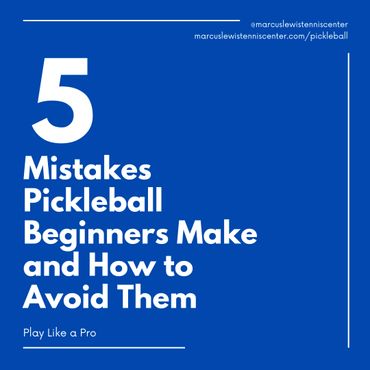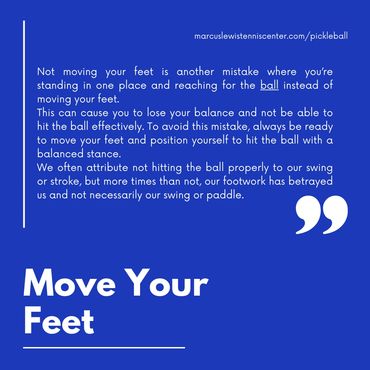Pickleball Tips
5 Mistakes Pickleball Beginners Make and How to Avoid Them






Tips for Improving your Backhand
Pickleball Pro Tip to improve your backhand....Pinching The Shirt: A Technique Borrowed From Golf
This might sound unusual, but its effectiveness is undeniable. This involves tucking a portion of your shirt under your arm on the side you’ll be hitting the backhand.
The purpose? To keep your arm close to your body.
Tuck a portion of your shirt under your arm on the side you’ll be hitting the backhand.
This technique encourages players to focus on turning their body and exploding into the ball at the point of contact. The moment of impact is when you release the shirt, ensuring a powerful and controlled hit. This method not only improves the power behind the drive but also enhances precision, making each shot more formidable.

Hand To Target: Directing Your Power
It is important to direct your hand towards your intended target during the swing. This straightforward approach ensures that your power is not wasted but instead is channeled directly into your shot.
By aligning your hand’s movement towards the target, the backhand drive gains additional force, making it more challenging for opponents to counter. This technique is about efficiency and precision, ensuring that power translates directly into performance.

Whose Lob Is It Anyway?
Running down lobs is a great source of confusion for opponents and even elicits debate from pros about who should hit the returns. Team confusion is a great reason why lobs work so well.
WHOSE BALL IS IT?
The most confusing retrieval is from the lob hit to the center of court near the baseline. So, who is responsible for this shot? Assuming you and your partner have similar foot speed, the answer is determined by which side the lob is coming from and where you think it’s going to land.
If a lob is coming from the odd side opponent, the odd side player will retrieve most lobs—not just because it’s their forehand running down the shot, but also because they have more time to see the ball from a crosscourt position. In this scenario, the down-the-line even court partner is closer to the opponent and is primarily responsible for guarding the line.
Now for the tough question: If a lob is hit to the back middle of your court from the even side opponent, who should run down the ball? Pros often disagree on this answer. Some say the crosscourt even side player should get it because that player has more time and more room. Other pros say the odd court player should run the middle ball down because it will be a forehand. Both are right and wrong at the same time.
Here’s why: The lob from the even side toward the middle of the baseline will be a difficult backhand for an even court partner to retrieve, but it will also be a difficult ball for the odd court player to run down because of guarding the line. The answer to who runs down the lob to the middle baseline coming from the even side depends on the even player’s ability to hit a backhand and also the odd court player’s ability to physically get to the ball. At the very least, both players should run back and have the discussion on who is more comfortable taking the shot.

OVERHEAD LOBS
When running down a lob over your head, run in a C-shaped pattern. We do this for two reasons: to open up our forehands and to avoid having the lob bounce into our bodies.
WHERE DO YOU GO WHEN YOUR PARTNER RUNS DOWN THE LOB?
When we run back for lobs, we are temporarily back on defense. That being the case, you and your partner should position yourselves accordingly.
The moment you recognize your partner is running down a lob, immediately back up. Still facing the net, move back between 3 and 6 feet from the baseline. Turn your body 45 degrees between your partner and the net.
If your partner hits a good drop shot, you will now be prepared to move back in. Likewise, if your partner hits a poor shot, you will be prepared for whatever comes next.

DRIVE, DROP OR LOB?
OK, we ran down the lob and our partner backed up. What next? You have two clear choices.
If the lob is barely in your reach, throw up a high, deep lob and get back into a ready position a couple of feet behind the baseline.
The other option comes into play if you make it back with time to spare. In this case, hit a crosscourt drop shot to give yourself more time and more court to hit to. If your opponent runs down a deep lob from behind the baseline and makes the poor choice to drive a ball back at you, the best play is often going to be a block drop shot back into the non-volley zone.
RECAP
Before starting a tournament, have the lob retrieval discussion with your partner. All speeds being equal, balls hit to the odd court should be run down by the odd court player with a forehand. At the same time, you have a decision to make on lobs hit toward the backhand of the even court player. Remember, when your partner goes back, you should too. Finally, if you have time, hit a crosscourt drop shot—always making sure to clear the net.

Take a Class
Let's put some of this new found knowledge into action. See our latest pickleball schedule and join us on the courts!
The Marcus Lewis Racquet Club
Acton, MA
